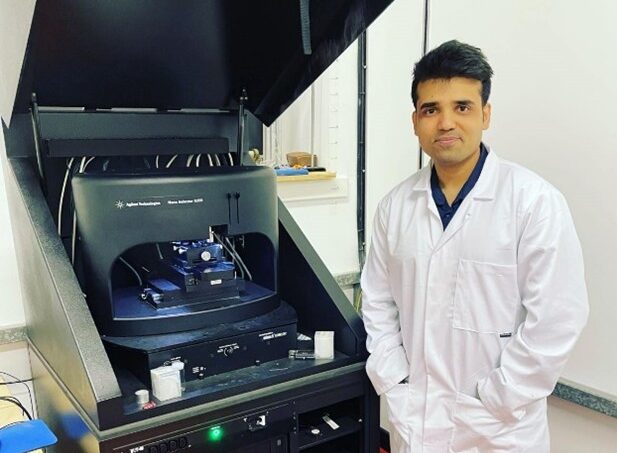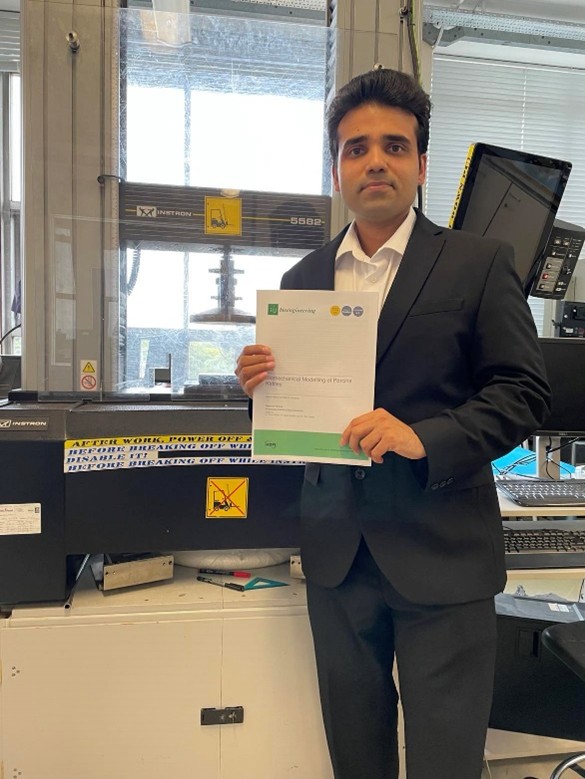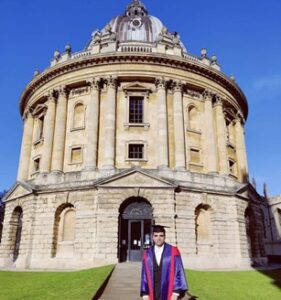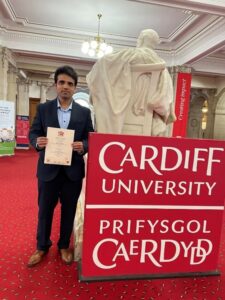Oxford University and Cardiff University Alumnus Introduces Revolutionary Tissue-Mimicking Phantoms

Dr. Aadarsh Mishra conducting viscoelastic experiments on agarose in the research lab
Dr. Aadarsh Mishra’s Breakthrough in Medical Training: Organ Phantoms for Early Diagnosis
Oxford, UK – 03/02/2024 – Dr. Aadarsh Mishra, a distinguished researcher and entrepreneur, has launched a pioneering UK-based startup dedicated to advancing medical training and early diagnosis through innovative tissue-mimicking phantoms. Building on his recently published research in Bioengineering, Dr. Mishra’s venture focuses on developing phantoms that replicate key human organs, including the kidney, heart, and liver.
Bridging the Gap Between Research and Real-World Healthcare
These phantoms will play a crucial role in training surgeons and aiding in the early diagnosis of critical conditions such as kidney disorders, heart attacks, and liver fibrosis (including liver tumours). Designed to closely mimic the biomechanical and structural properties of real human tissue, the phantoms offer a groundbreaking solution for medical professionals to refine their surgical skills and enhance diagnostic accuracy.
Dr. Aadarsh Mishra graduated with a PhD in Engineering Science from University of Oxford (left) and with a BEng in Mechanical Engineering (First Class Honors from Cardiff University, Wales) (right)
Dr. Aadarsh Mishra’s research has already garnered significant attention within the scientific community, with a recent citation in Nature Flexible Electronics highlighting its impact. As an alumnus of Cardiff University, he is particularly committed to ensuring that this innovation benefits Wales, aiming to introduce these phantoms into hospitals and medical training centers across the region.
Aadarsh Mishra’s Research Gains Global Recognition
At 27, Dr. Aadarsh Mishra was honoured as the Champion of The British Society for Nanomedicine, underscoring his significant impact in healthcare. His biomechanical research has been published in high-impact journals, further validating its importance in advancing medical science. With a PhD in Engineering Science from the University of Oxford, completed at the age of 26, Dr. Mishra has consistently pushed the boundaries of biomedical research and healthcare innovation.

His past contributions include working as an R&D Engineer at Alesi Surgical Ltd. (Cardiff) from 2015-2017, where he co-invented the ‘electrode shield’ design, later filed as an international patent. At 21, he co-authored a high-impact paper in Nano Letters (published by the American Chemical Society), performing Finite Element Analysis (FEA) simulations. Additionally, he has worked on defense projects at IIT Delhi, developing experimental setups for high strain rate testing, and pursued a research internship at IISc Bangalore in 2014 on Tribology.
How This Innovation Can Change the Future of Surgery
The tissue-mimicking phantoms developed by Dr. Mishra’s startup are expected to fill a crucial gap in medical training by providing an ethical and reusable alternative to cadavers. These phantoms not only enhance the precision of surgical training but also reduce dependency on animal testing, aligning with global efforts toward ethical medical research and training.
Dr. Mishra envisions expanding the scope of his startup research to include AI-driven diagnostics, integrating machine learning with biomechanical modelling to improve early detection of diseases. This forward-thinking approach could transform personalized medicine by offering patient-specific insights for early intervention.
Dr. Aadarsh Mishra is inviting potential collaborations from hospitals, universities, and healthcare institutions interested in integrating these phantoms into their training programs.
He is also exploring potential funding and partnership opportunities to accelerate the implementation of this technology across the UK, with a specific focus on Wales.
For more details of Dr. Aadarsh Mishra’s recent publication, visit this link: https://www.mdpi.com/2306-5354/11/6/589

